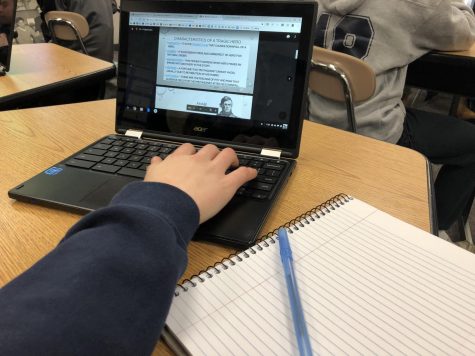Editorial: Let the anxiety out of the bag

Josh Stroder, left, studies at the Montgomery City Youth Center as math teacher Ed Hall, center, works with a youth offender, right, Monday, Dec. 3, 2007, in Montgomery City, Mo. Stroder spends much of his days studying and working as a tutor to other youths at the center. In Missouri, where teen offenders are viewed not just as inmates but as works in progress, troubled kids are rehabilitated in small, homelike settings that stress group therapy and personal development over isolation and punishment. (AP Photo/Jeff Roberson)
I have been concerned recently with the amount of people in my life that have come forward about their struggle with anxiety. It upsets me that so many high school students feel as if they are alone, and that they are the only ones battling with anxiety. I feel helpless, as if I can’t help each and every student suffering with anxiety at North Penn High School. To make it even worse, it seems as if discussing mental illness is taboo among high schoolers. I quickly became inspired to talk about this vital issue through The Knight Crier, an easy outlet to educate everyone about anxiety.
It is inevitable for high school students to feel nervous before a big test, presentation, or even a sporting event, but when a student starts avoiding daily activities due to excessive worrying on a daily basis, he/she has begun an unforgiving battle with anxiety.
Understanding what anxiety is can be difficult, as any other mental illness can be, due to the lack of overt symptoms. Anxiety is like watching a scary movie, and you know something is about to jump out and scare you. With anxiety, it never does jump out and scare you. Instead, you just keep waiting for it to happen. It isn’t a matter of if, but when. There is a lack of control over the worrying, causing the person to feel on edge, unable to concentrate, irritable, nauseous, shaky, and unable to fall asleep or stay asleep.
According to Anxiety and Depression Association of America (ADAA,) anxiety disorders are the most common mental health illness in the United States. Approximately 40 million Americans go through each day with anxiety, and only 36.9% receive treatment. This means that more than half of those who are suffering are suffering alone.
“Talking about it is so important because there can be a stigma to mental health. It’s sort of similar to if you break your leg, have a bruise, or something you can see. You know someone’s sick whether they have an allergy, or cancer, or a medical condition. Something that you can see that is tangible is easy to understand and to have empathy for. Unfortunately with mental illness you cannot always see that. You cannot always see what the symptoms are or what’s going on with someone. People who deal with mental health issues, whether it’s anxiety or depression, can put on a happy face, or lead people to believe that things are going well. It’s similar to social media. We’re very cognizant of what we put out to people. It’s almost like wearing a mask. For some people it’s hard to understand what’s going on,” explained North Penn High School guidance counselor, Dr. Nicole Yetter.
In order to erase the stigma of mental illness we must start engaging in important conversations. By talking about anxiety, it will make those who are struggling much more comfortable with confronting their battles. High schoolers will begin to feel less alone and more open to receiving help.
“I think that’s what’s so important about mental health and why it’s so important to bring it to the forefront, to do articles like this, to reach out and bring it because a lot of people are struggling with things internally. It’s really important to know that you’re not alone, and that there’s a lot of support out there,” said Dr. Yetter.
There are many resources for those struggling with anxiety. Students can participate in psychotherapy or “talk therapy” such as Cognitive Behavioral Therapy (CBT) or Exposure Therapy. Support groups, stress-management techniques, and medication are also other forms of treatment. In-school support is also available through our NPHS guidance counselors, SAP, and school psychologist.
While anxiety can be scary and tiring, we should not and cannot fear it. It is so important for high schoolers, as well as adults, to know that they are not alone in their battle with anxiety. We must start talking about mental illness so that people can be open about their struggles and receive the proper treatment. We are only given four years of high school, so let’s get through it living happy and healthy lives.
Sources: https://www.nimh.nih.gov/health/topics/anxiety-disorders/index.shtml











